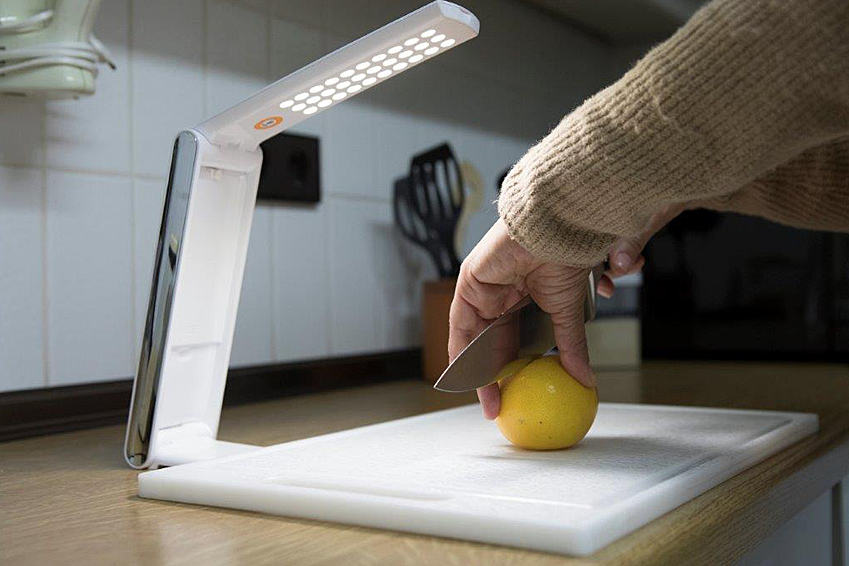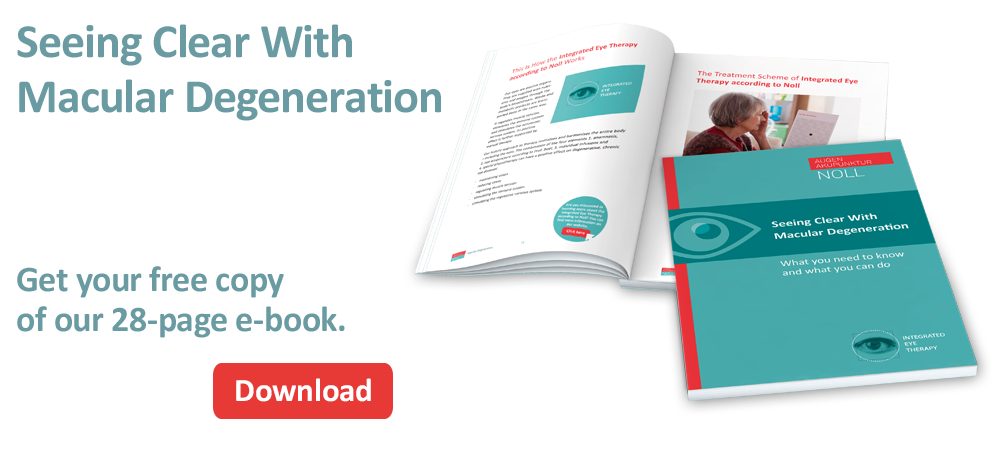Ten tips for light and lighting for Macular Degeneration (AMD)
Good lighting can be extremely effective in making everyday life easier. Many people with visual impairment, such as macular degeneration, are not aware of this.
Patients suffering from macular degeneration find it increasingly difficult to read, and household activities also require a great deal of effort. The right lighting can provide relief for those affected.
Ten tips for light and lighting in the home, office and workplace with macular degeneration
The basic illumination of the entire apartment should be uniform, sufficiently bright, glare-free, low-shadow and flicker-free.
It is recommended to use energy-saving LED lamps for the basic illumination. The size and number of these should be selected so that a bright but not dazzling basic illumination is achieved and each room is sufficiently brightly lit.
Depending on the size of the room, different light sources can be combined to achieve the desired brightness. It is advisable to use different light sources to make the lighting as uniform and flicker-free as possible. It is also advisable to pay attention to a good light colour that is not too bright and not too dark.
Indirect lighting over bright walls and ceilings is well suited for dark parts of the room or as a supplement.
Indirect lighting can make the room brighter and cosier by reflecting light into the room. Indirect light feels softer because it is not directly focused on a single area. It can illuminate rooms without shadows, making them feel inviting.
It can also help to emphasise the size of the room. Indirect light can be used to accentuate a room by highlighting individual areas, for example to emphasise a particular wall or piece of furniture. It can also be used to illuminate difficult areas that cannot be lit by direct lighting.
Test whether you do better with cold or warm light.
It is best to try both and see which works best for you. Cold light can make you feel more alert, but it can also make you feel uncomfortable. Warm light, on the other hand, can make you feel warm and relaxed. So try both and see which one suits you better.
Where there is work, reading and tinkering, additional work space lighting is needed.
Additional task lighting is necessary when working, reading or tinkering in a room. Sufficient lighting is important to achieve an optimal work result and to protect the eyes from strain and routine tasks.
It is also advisable to use supplementary lighting when working in a particular place for longer than normal to protect vision. Supplementary lighting may be available in the form of floor lamps, wall or ceiling lamps, table lamps or even special task lights, depending on where you work.
Choose luminaires where there is no direct view of the light source
There are different types of luminaires where you do not have a direct view of the light source. These include, for example:
- Ceiling luminaires with glass cover
- Pendant luminaires
- Wall luminaires
- Floor lamps
- Chandeliers
- Spotlights
- LED strips
- Lampshades
Try to reduce glare, for example by using louvers or curtains on windows, matte floors and work surfaces.
Reduce glare by installing louvres, curtains or other privacy screens on windows, using matt floors and choosing matt work surfaces.
By following these simple steps, you can significantly reduce glare in your home or office. This can contribute to a more pleasant atmosphere and increase work productivity.
In addition, you can also adjust the facades of your building to reduce direct sunlight. This can help you save energy and costs by keeping the temperatures inside the building constant.
Dimmable luminaires are a good way to respond to different lighting conditions and changes in lighting needs.
Dimmable luminaires are a great way to respond to different lighting conditions and changes in lighting needs. These luminaires can be set to a specific brightness, which offers greater flexibility and control over the light.
You can dim the luminaires as needed to match the ambient lighting conditions. Dimmable luminaires are a great addition to many rooms and can help create a pleasant atmosphere.
Motion sensors that automatically turn on lights when you enter a room are often a better solution than light switches.
A motion detector is a device used to detect movement. It mostly uses infrared radiation to detect movement and can be used in different situations, e.g. as a security system to prevent intrusion into a building or as part of an automated lighting system.
Motion detectors that automatically turn on the lights when a person enters a room are an efficient and cost-effective solution to save energy and costs. They are also a safer and more convenient solution than light switches, as they automatically turn on the light when you enter the room and there is no need to search for the light switch in the dark.
This type of lighting can also help prevent accidents, as you no longer trip and fall in the dark because you forgot to turn on the light. Overall, motion sensor lighting is a very practical and energy-efficient solution that can be found in many households.
Don’t place lighting under wall cabinets too far back. Lights in cabinets make it easier to find clothes, for example.
When setting up wall cabinets, it is important not to place the lighting too far back. This makes it easy to illuminate the inside of the cupboard and ensures that you can find everything easily.
Properly positioned lighting makes it easier to find clothes, objects and other items placed in the cupboard.
In many situations, a headlamp is useful. On the road, flashlights and small, foldable lights are helpful.
A headlamp is a very useful tool that can be used in many situations. Whether you are out on a hike at night, repairing a bike or walking through a dark basement, the headlamp is an indispensable aid.
It’s small and comfortable to carry, and it’s easy to turn it on and point it at the area you need. Moreover, when carrying a headlamp, there is no need for other types of torches or foldable lights, as it provides light far enough to illuminate the path, even in the dark.
Good reasons for better lighting in macular degeneration
- Optimizing light can improve visual acuity, contrast perception and reading speed.
- A good lighting solution leads to an increase in independence, reduces the risk of accidents and also enables faster orientation.
- Even small changes in lighting influence spatial perception, psychological well-being and health.
Source: 2019 Deutscher Blinden- und Sehbehindertenverband e. V.


